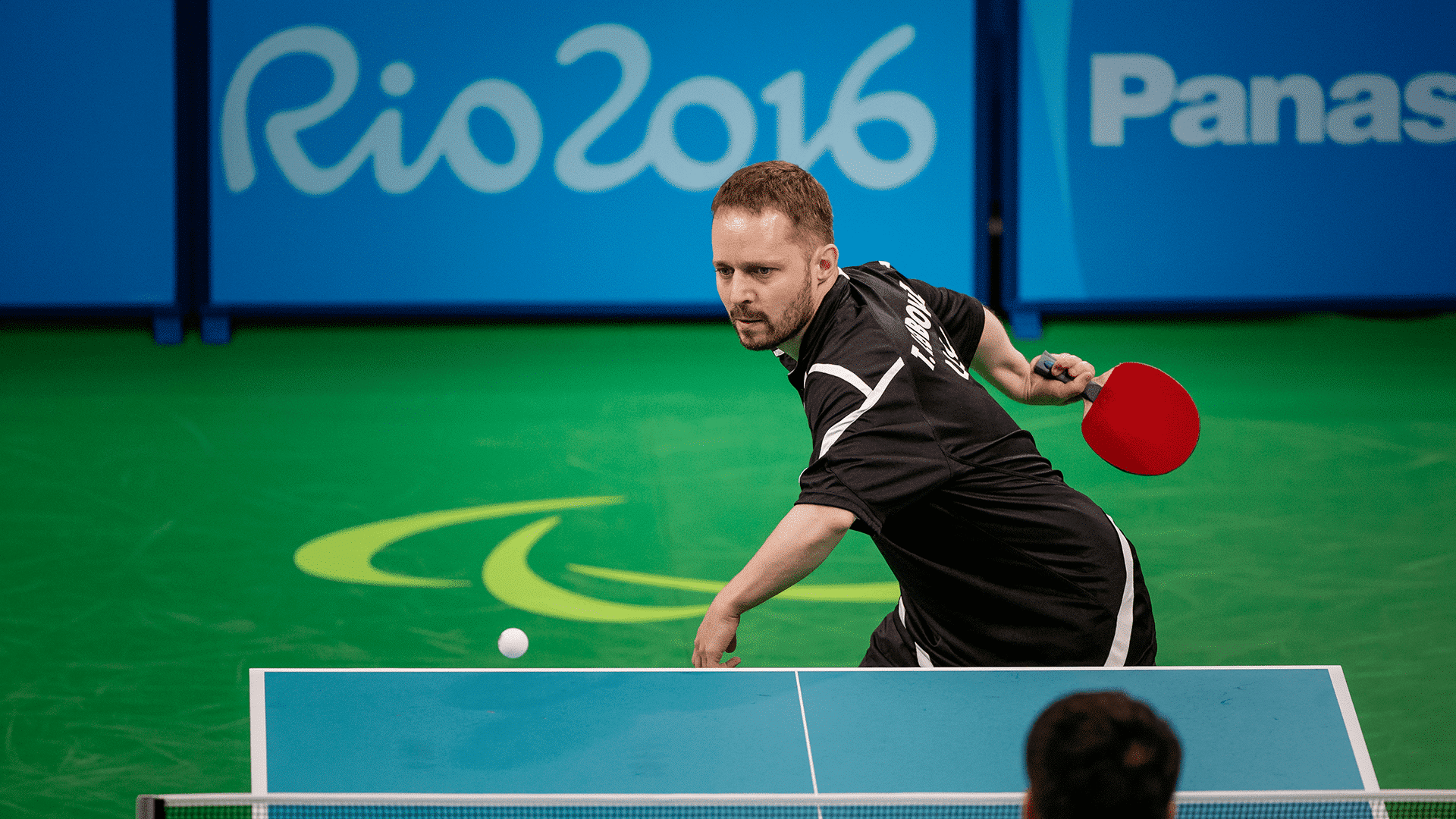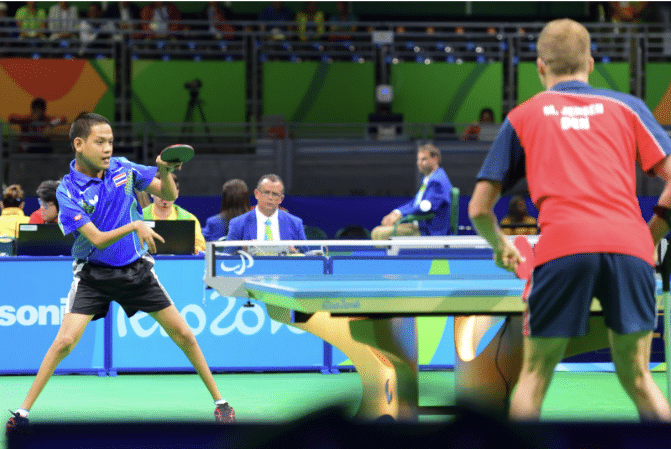The six-time Paralympian found table tennis during his difficult childhood.

At the United States Olympic & Paralympic Museum, we celebrate the power of sports, and table tennis is no exception. This exciting and fast-paced sport continues to inspire, transform, and unite athletes and fans alike.
Here we provide an overview of these two sports, highlighting their similarities and differences and delving into the unique aspects of the sport. So, grab a paddle and learn more about Olympic and Paralympic table tennis.
Olympic table tennis, also called “ping pong,” is a sport where athletes use fast reflexes, impeccable hand-eye coordination, and unmatched agility to hit the ball to the opposing player. It is a variation of lawn tennis and began in the 1880s as after-dinner sports entertainment.
In 1926, England held table tennis competitions, and since then, it has become a popular sport with many participants globally. In fact, Olympic and Paralympic table tennis is now practiced by athletes in over 100 countries, including the United States.
Table tennis is a game played on a table divided by a net. Two players, or teams of two, stand at opposite ends and use small paddles to hit a lightweight ball back and forth over the net. As each player strikes the ball at the other team using a specialized racket, they hope to score by making the ball bounce twice on the opponent’s side or making the opponent hit the ball out of bounds. The goal is to win seven out of 11-point games.
Men’s and women’s team competitions comprise four singles and one doubles match, each played over five games. Teams consist of three players and a team wins when they secure three individual game victories.
The United States has won 10 gold medals, 9 silver medals, and 11 bronze medals in table tennis.

Para table tennis is a type of tennis for athletes with physical disabilities. It is part of the Paralympic Games and is governed by the International Table Tennis Federation (ITTF) in collaboration with the International Paralympic Committee (IPC).
This sport debuted in the 1960 Paralympic Games in Rome, Italy. Since then, it has been a regular and integral part of the Paralympic program
The United States has a successful history in para table tennis, winning 110 medals at the Paralympic Games. This includes 33 gold medals, 42 silver medals, and 35 bronze medals.
There are classifications for these ping pong athletes that help determine their abilities to participate in the sport. Classes 1-5 are for athletes who compete in wheelchairs, while classes 6-10 are for athletes who compete standing.
The rules of table tennis in the Olympic and Paralympic Games vary slightly. For example, athletes competing in wheelchairs can bounce the ball twice on their side of the table before returning it. Others are allowed to ask for help with mobility around the table. The first player to score 11 points and lead by 2 or more points is the winner.
New York native Tahl Leibovitz, a well-known U.S.A. table tennis player, earned a spot on the Atlanta 1996 Paralympic Team. He then won the gold medal in class 7 singles and the bronze medal in the team’s event.
Jennifer Johnson, a member of the 1996 Paralympic team, competed in the Paralympic games in Atlanta, Georgia where she earned a gold medal in women’s singles.
These differences make para table tennis an inclusive and accessible sport for athletes with physical or intellectual disabilities while maintaining traditional table tennis’s core elements.
Sign up for a museum tour to explore sports, athletes, artifacts, and more at the United States Olympic & Paralympic Museum.
Learn more about your favorite Olympic and Paralympic sports or discover a new favorite!